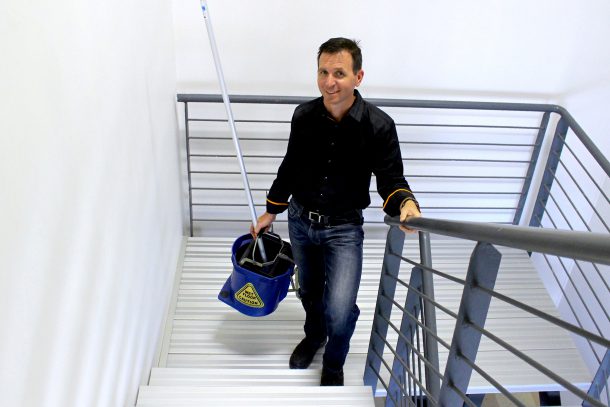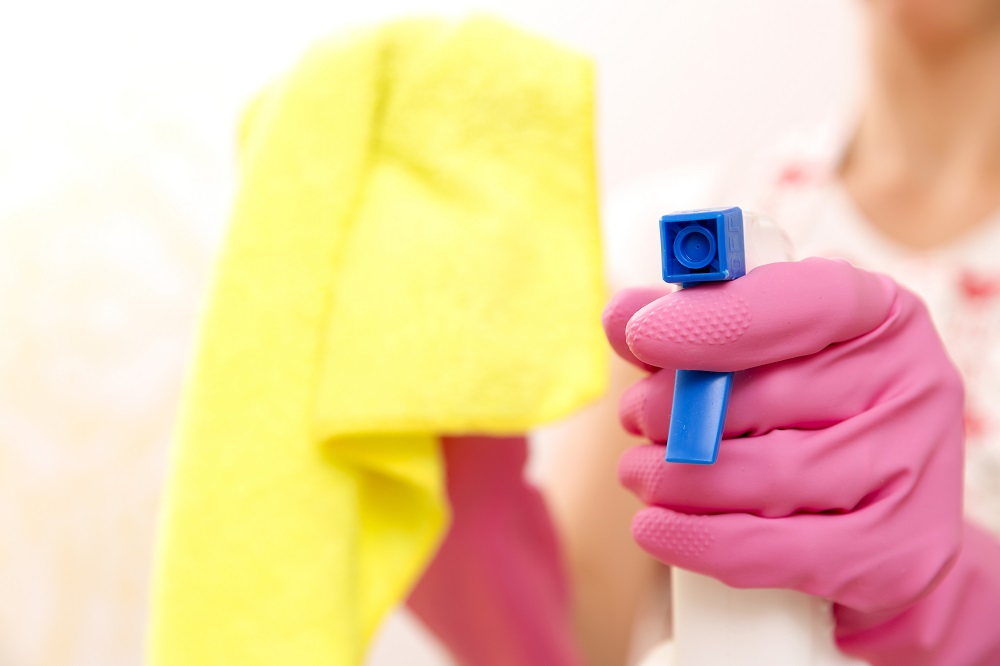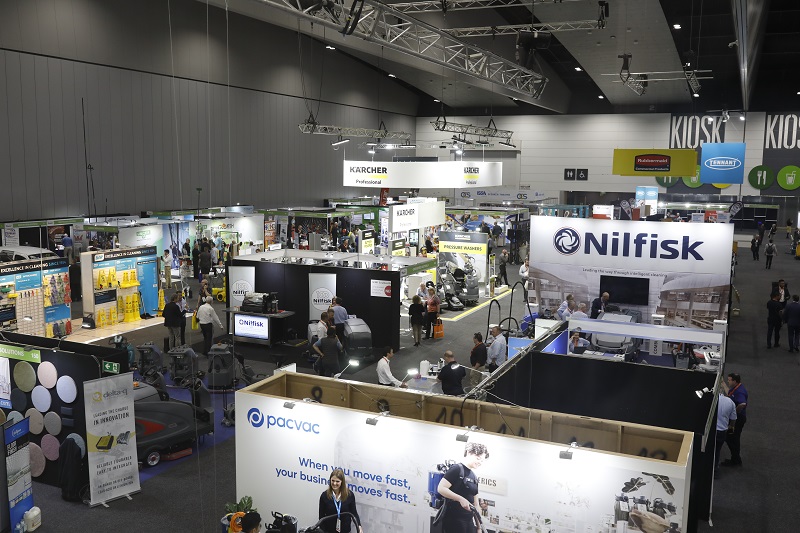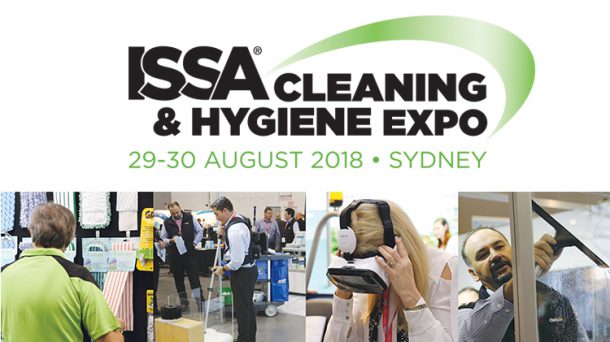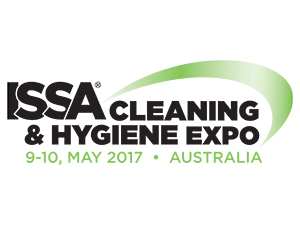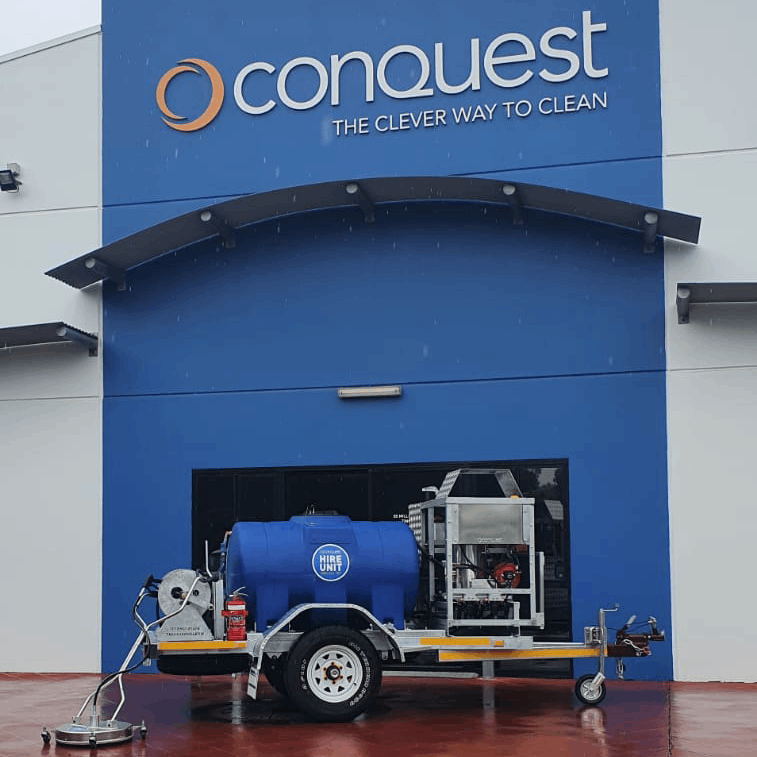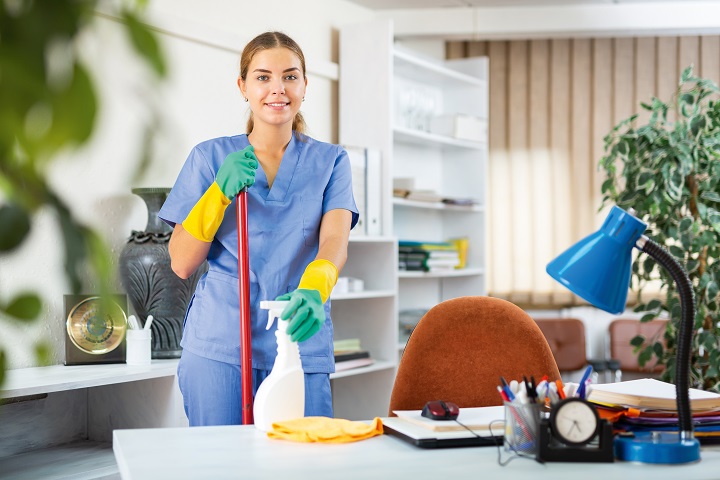
Setting up your cleaning program is no easy task.
Whether you have an in-house team or you outsource work to a contracted service provider, the responsibility to nail the details of your cleaning program is up to you.
With so many chemicals and tools to choose from, it’s easy to get overwhelmed. Worse, sometimes you don’t even have a say in what equipment and products the facility will use.
Despite all these challenges, how you set up your program from the start will have a lasting impact on your end results.
Selecting the right tools and equipment that are specific to the needs of the building, the desired outcome of the work, and that are safe and ergonomic for cleaning workers is a great foundation for a successful cleaning program.
Understand your needs and wants
You can’t communicate what cleaning outcomes you want if you aren’t sure about them either. A scope of work document helps your team understand what a project does and doesn’t cover.
I have found that a typical scope of work document does a great job of defining tasks and frequencies, but not a great job at explaining the desired results.
Take time to determine what you expect to achieve. The results should include the cleaning outcomes (appearance, tolerance, efficacy, floor traction, etc.).
I know this may sound silly but avoid using the word “clean” as an outcome of the results without further definition. Clean can mean so many things to different people, even in our industry.
Instead, review your existing scope of work and update it to represent current requirements, changes, and cleanliness expectations. This is also a good time to ensure your cleaning program meets current local department of health regulations.
Standardise cleaning products, equipment, and PPE
If your building requires specialised chemicals, equipment, and safety procedures make sure that you define those needs.
Fully protect your environment and its occupants with the proper personal protection equipment (PPE) per your company standards.
Make sure employees are trained and qualified not only to use the equipment, but also to identify safety hazards, report them, and correct them professionally.
One great example is Southwest Airlines’ standardisation model. There are a number of reasons for its success, but one is based on its standardised equipment. The airline flies only one type of aircraft, the Boeing 737, which creates considerable efficiencies. For example:
- Training
Staff training involves only one aircraft. This applies to pilots, cabin staff, ground staff, baggage handlers, mechanics, accountants, marketing managers, cleaning workers, and maintenance staff.
- Scheduling
All staff can work on any aircraft. For example, if a pilot is sick, any other pilot can do the job without additional training or instruction.
This reduces the odds of having to cancel a flight when the scheduled staff members aren’t available. Additionally, any Southwest plane can taxi up to any airport, terminal, or gate from which Southwest flies.
- Efficiency
Employees know exactly where everything is and how to do their job, no matter which plane or flight they’re working, supporting, or servicing.
- Maintenance
Mechanics are trained to service one type of plane. The capital (cash) tied up in parts inventories and tools is much lower than that of other airlines because there are fewer required parts. This standardisation also makes it more likely a needed part will be available, reducing the amount of time planes are on the ground not producing revenue.
Take some cues from Southwest when it comes to standardising your equipment and processes and you should gain similar efficiencies for your cleaning program.
Establish your cleaning budget
Be clear from the beginning on how much money you plan to invest in your cleaning program. A common, but big, mistake is expecting a steak dinner on a hot dog budget. Develop a custom cleaning plan at a fair market—including current salary demands—that will deliver what you want. Exceptional service outcomes will depend on matching your expectations with your budget.
Make your values clear
Take time to establish what you value most. The number one priority is to provide a clean, healthy, professional working environment. Place great emphasis on hiring practices and employee retention.
Third party accreditation can help you communicate the value of cleaning and provide transparency on your cleaning investment.
If you value cleaning methods that reduce your environmental impact, include that component in your cleaning plan as well.
When you are clear about how you set up your cleaning program and what kind of values you operate by, your program will be stronger. You will build more trust with your stakeholders, resulting in more reliable cleaning performance and outcomes.
Good communication, accountability, safety while cleaning indoors, and training good leaders will increase the value of your contracting outcomes.
In this new cleaning-focused environment, a strong foundation with clear expectations will help you achieve your cleaning program’s performance goals.
Tim Poskin is the director of ISSA Consulting, providing systems integration and consulting solutions for the cleaning industry. He can be reached at timp@issa.com.
This article first appeared in CMM Magazine and has been republished with permission
Comment below to have your say on this story.
If you have a news story or tip-off, get in touch at info@incleanmag.com.au
Sign up to INCLEAN’s newsletter.
